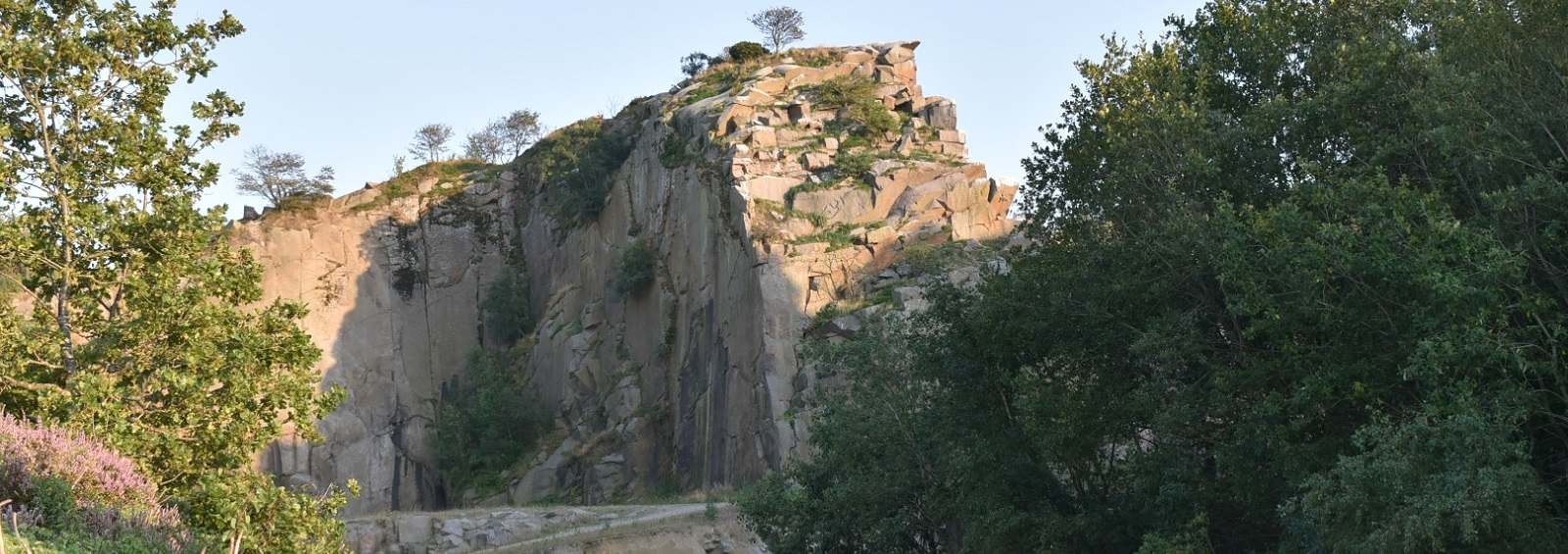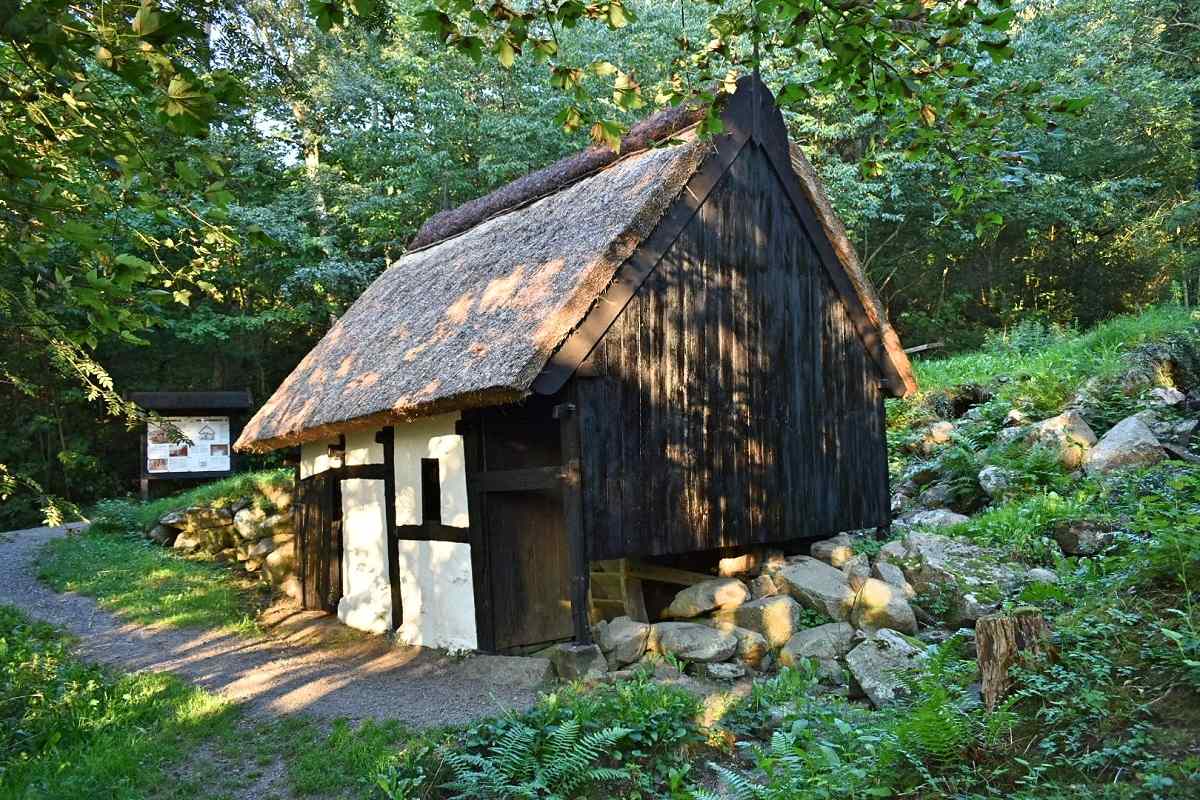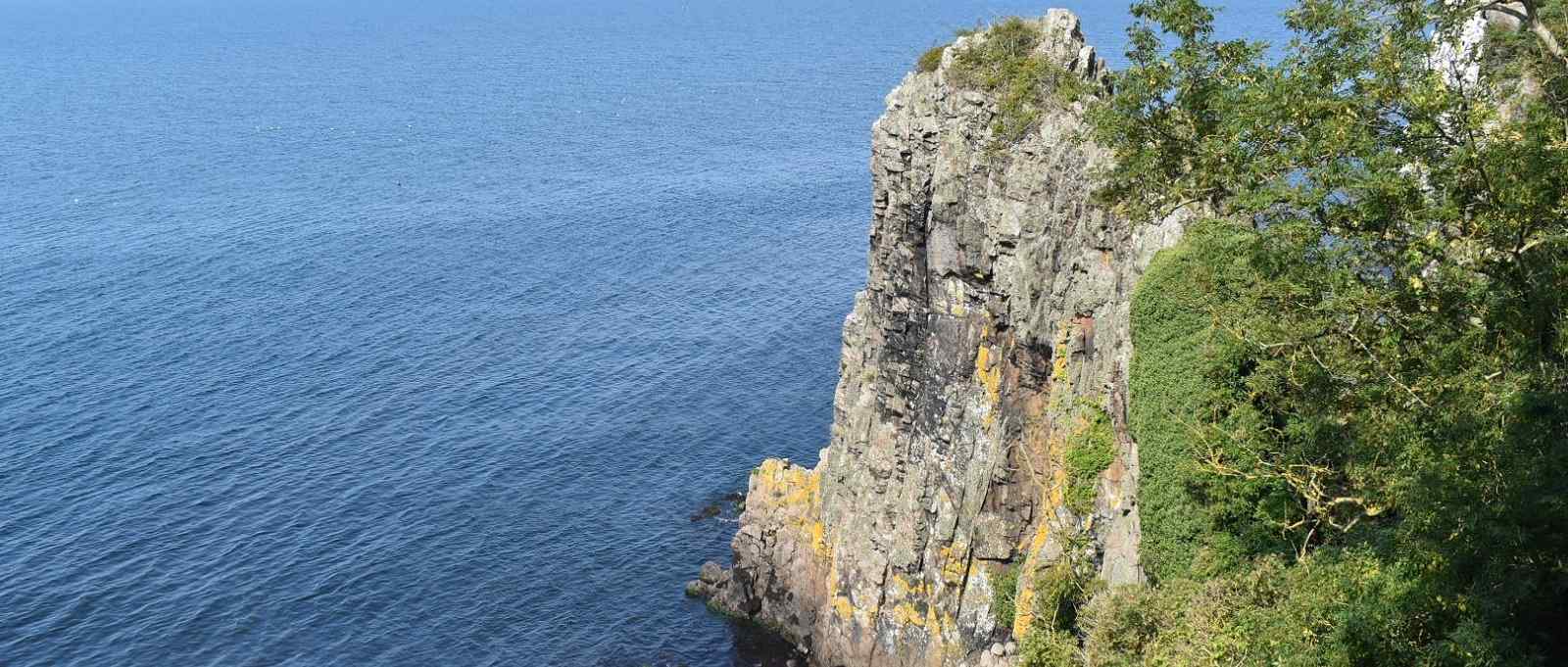
The small town of Vang is situated on the northwest coast of Bornholm, just in front of the ruins of the medieval Hammershus Castle. Driving into Vang, you descend a steep road along the coast to the harbour, the centre of a fishing village. The harbour is surrounded by many well-preserved fishermen's houses. There is a car park at the harbour, which can be used as a starting point for exploring the town.
The view from the harbour over the terraced village shows the most beautiful side of Vang, until it is hard to believe that only about 100 people live here. There are some very nice holiday homes in and around the town.
Every visit to Vang starts at the harbour.
Fishing in Vang has a long tradition. Herring has been caught and salted here since the Middle Ages. Herring used to be the people's main dish. Sometimes salted herring was eaten up to three times a day. Later it was also smoked. Cod was made into dried fish to be eaten long after fishing. Dried fish was re-soaked if necessary and then served with potatoes and mustard. Today it is rare to see a fisherman going out to sea.
In the past, Vang was also the centre of stone working on the island. In the harbour, blocks of granite stone from those days are still there to remind us of this. Fishermen and stonemasons have always been an important part of Vang's population.

Vang has always been a fishing village. It was built on the only place between Teglkås and Hammershus where houses could be built. The rock of the coast was set back a little here, making a small area to build in.
The first written mention of Vang dates from 1570, but archaeological finds from the Iron Age indicate that the area was inhabited much earlier. In the early 19th century a harbour and water mills were built. Around 1870, a fishing harbour was built. Unfortunately, it was not big enough, so the fishermen repeatedly wrote petitions to the Bornholm Parliament to expand the harbour between 1880 and 1890. Almost no foreign fishermen who found themselves in distress at sea were allowed to call at the harbour during storms. Construction work on the quay and pier was finally planned in 1898.
It was not until the late 19th century, when granite quarrying was flourishing on Bornholm, that Vang became the capital of stone quarrying on Bornholm. In 1896, a loading harbour was built south of the town for the Ringebakkerne granite quarry so that the extracted granite could be transported quickly and inexpensively.
Some fishermen moved to the quarry to earn a more regular income. This peculiar coexistence of fishermen and quarrymen ensured Vang's existence. There were other fishermen who did not go out to fish, but traded provisions on their boats. These were open so-called "bumboats", which delivered provisions to the busy shipping lines around Bornholm. Passing or anchored ships were supplied with potatoes, tobacco, alcohol and bread.
However, from 1920 onwards this trade was banned by the official authorities. At this time more and more fishermen and farmers decided to continue their work as stonemasons.
At first there were single houses around the harbour, later more and more were built on the hillside. In Vang you can see not only old mud houses with thatched roofs, but also many houses built of brick with tiles. This was a result of the modest prosperity that came with the quarry in the 1920s. This also improved the hygienic conditions and lifestyle in Vang. Previously, living conditions in Vang were very poor and especially harsh in winter. In addition, the place suffered from a lack of fuel, so it was heated with wood and peat.

The only real attraction is the Vang watermill. This thatched rarity is over 200 years old and unique in its construction on Bornholm. The watermill has been renovated several times, the last time between 2010 and 2011. The Vang watermill dates back to 1811 and was in operation until 1905, and in 1927 it was renovated and placed under protection as a historical monument. In 1931 the mill and residential buildings were sold. In 1969 the watermill was completely taken over by the Bornholm Museum. In 1978 the Vang watermill was the only functioning watermill on Bornholm. In 1986 the watermill was renovated inside and out under the direction of Bornholms Museum and completely refurbished. The last comprehensive renovation took place in 2010/2011.

Vang Granitbrud (Vang Granite Quarry) is a place with many outdoor activities, with unique nature and geology.
The whole area is a former granite quarry from the 1880s, when granite from Vang Granitbrud was used for many different projects in Denmark and abroad: in Copenhagen (city hall, national museum, etc.), even a bridge over the Great Belt. The quarry operated until 1996, due to the economic inefficiency of prices in the granite market.
The project "New life in Vang granite quarry" turned the quarry into a beautiful nature and a place for various activities. New trails, shelters and picnic areas have been created. Mountain trails for MTB riders and climbing walls have transformed the area into an ideal place for outdoor activities.

Hiking trails run along the rocky coastline and lead hikers or walkers to the ruins of Hammershus Castle. Shrubs and heathland characterise the countryside around Vang. South of Vang is one of Bornholm's most interesting sights, Jons Kapel , one of the most impressive cliff formations on the island. According to legend, a monk lived here in the Middle Ages and preached to fishermen on the Baltic Sea from this cliff, his chapel. Today, steep steps lead down the cliffs to a rocky beach. There you can admire cliffs up to 22 metres high. Also accessible are caves where a hermit is said to have lived. Just be careful during storms, when water is pushed onto the beach and into the caves!

North of Vang there is also a real waterfall, the third highest in Denmark. Its name Pissebækken can be a bit misleading, as it has the cleanest water on the island.
South of Vang, just by the Ringedals Watermill, there is a path to some mill ponds. In the past these enabled the mill to operate even in the dry season. Further along the path we come to Ringedalssee. South of the lake is a cave which is said to have once served as a refuge for a wanted murderer.